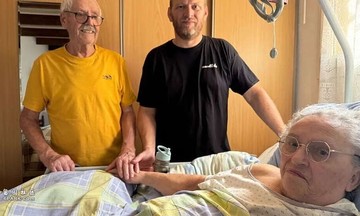The term "short kings" emerged to describe successful and confident men of shorter stature. However, British relationship expert Tracey Cox argues that "heightism" is a real issue, driving many men to undergo expensive and painful limb-lengthening surgeries.
"This isn't vanity, it's a desperate measure born out of societal pressure," Cox said.
 |
Many women avoid dating shorter men due to a perceived lack of safety and protection. Illustration: Nextluxury |
A study of dating apps revealed that nearly 50% of women prefer to date someone taller than themselves, ideally around 6 feet. Men meeting this criterion receive over 40% more matches, despite the average male height in the UK and US being around 5 feet 9 inches.
For many women, men under 5 feet 8 inches aren't considered as potential partners. In fact, only 4% of couples in the US have husbands shorter than their wives.
According to Cox, the desire for a tall partner is deeply ingrained, a consequence of evolution. Women report feeling safer and more protected with taller men. "It's a primal instinct from when physical protection was paramount," she explains. Furthermore, taller men are often seen as symbols of status and success.
Interestingly, some studies suggest "short man syndrome" (Napoleon complex) is real, proposing that shorter individuals tend to be more temperamental to compensate for perceived shortcomings. "He's always trying to prove himself," commented many women who have dated shorter men.
However, this insecurity could stem from constantly being overlooked in favor of taller men. Statistics also show that shorter men often make good husbands, enjoying longer and happier marriages.
 |
British relationship expert Tracey Cox. Photo: Dailymail |
Some British and American women told Cox they would "rather be single than date a short man".
This reality has prompted many Western men to seek limb-lengthening surgery. The procedure involves surgically breaking the femur or tibia. A metal rod is inserted, gradually extending the bone over months, at a rate of about 0.04 inches per day. The cost ranges from 20,000 to 80,000 GBP (approximately 640 million to over 2.5 billion VND).
Recovery can take up to a year, requiring crutches, physical therapy, and enduring significant pain. Patients also face risks of infection, blood clots, nerve damage, improper bone formation, and even the possibility of permanent disability.
Minh Phuong (Dailymail)












